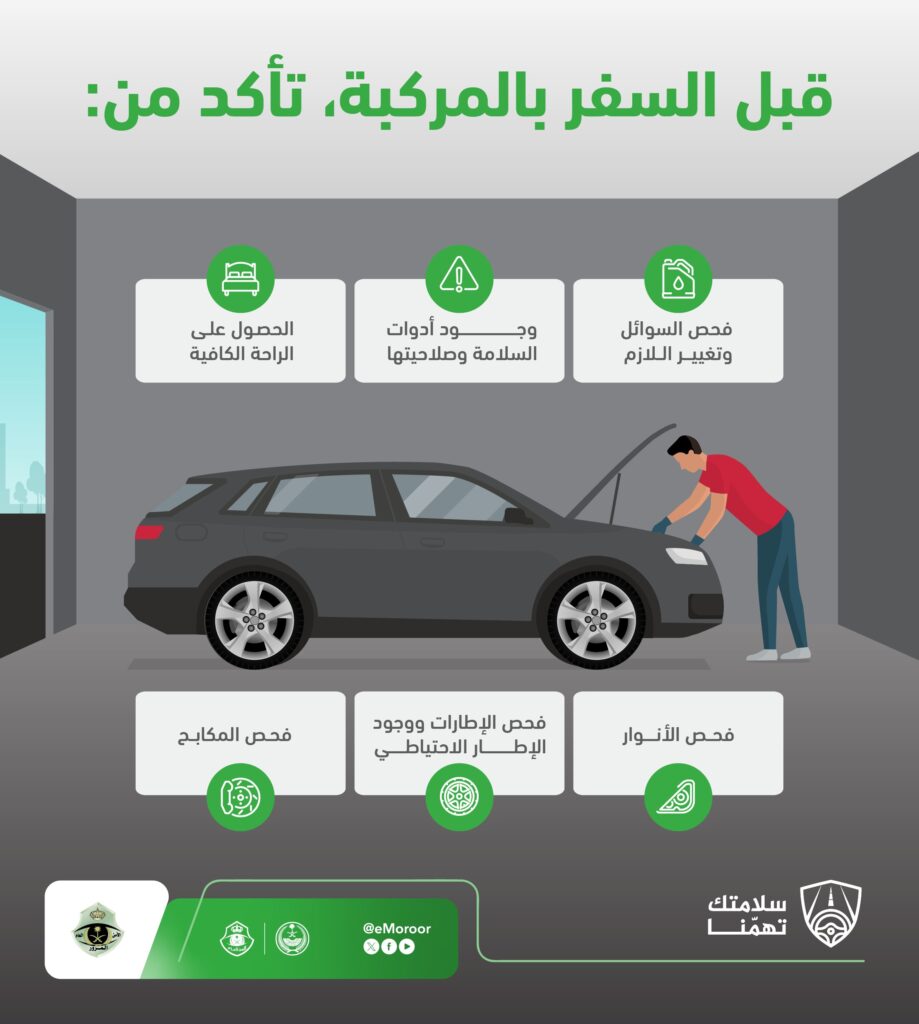The Saudi Traffic Department has shared six important safety tips for drivers preparing for long-distance travel. These guidelines aim to prevent vehicle breakdowns and reduce accident risks, ensuring a safer journey for everyone on the road.
The Traffic Department advises drivers to make sure of the following before setting out on a long trip:
1. Get Enough Rest

Ensure you are well-rested before starting your journey to stay alert and focused while driving.
2. Check Safety Tools

Verify that all necessary safety equipment, like a first aid kit and emergency tools, is available in the vehicle and in good working condition.
3. Check and Replace Fluids as Needed

Inspect essential fluids such as engine oil, coolant, and brake fluid. Refill or replace any that are low to keep the vehicle running smoothly.
4. Inspect Tires and Ensure Spare Tire Availability

Make sure all tires are in good condition and that a spare tire is available and functional in case of an emergency.
5. Inspect the Brakes

Check that the brakes are working properly to prevent any issues during sudden stops or emergencies.
6. Check the Lights

Confirm that all lights, including headlights, brake lights, and indicators, are functioning properly to maintain visibility and communicate effectively with other drivers.

By following these six precautions, drivers can significantly reduce the risk of accidents and ensure a safer, smoother long-distance journey.